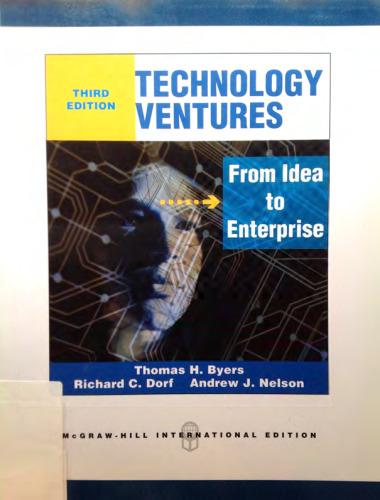Question
31. The auditor shall apply the guidance of PSA 500, Audit Evidence, instead of PSA 620, Using the Work of an Auditor's Expert, when using
31. The auditor shall apply the guidance of PSA 500, Audit Evidence, instead of PSA 620, Using the Work of an Auditor's Expert, when using the work of
a. Management's expert. c. Either a or b.
b. Auditor's expert. d. Both a and b.
32. The risk that an expert's objectivity will be impaired increases when the expert is related in some other manner to the entity (e.g., by being financially dependent upon or having an investment in the entity) and the expert is
a. Engaged by the entity
b. Employed by the entity
c. Engaged by the auditor
d. Employed by the auditor
33. According to PSA 620, Using the Work of an Auditor's Expert, which is incorrect?
a. The auditor shall not refer to the work of an auditor's expert in an auditor's report unless required by law or regulation to do so.
b. It may be appropriate to refer to the auditor's expert in an auditor's report containing a modified opinion to explain the nature of the modification.
c. If the auditor makes reference to the work of an auditor's expert in the auditor's report, the auditor shall indicate in the auditor's report that such reference does not reduce the auditor's responsibility for that opinion.
d. The auditor may not need the permission of the auditor's expert when making a reference in the auditor's report.
Audits of Group Financial StatementsIncluding Work of Component Auditors
34. When using the work of another auditor (component auditor), the principal auditor should ordinarily perform the following procedure
a. Obtain information regarding the professional competence of the other auditor in the context of the specific assignment undertaken by the other auditor.
b. Advise the other auditor of the applicable independence requirements as regards both the entity and the component and obtain representation as to his compliance with them.
c. Advise the other auditor of the applicable accounting, auditing and reporting requirements and obtain representation of compliance.
d. All of the above
35. The financial statements of a company (investee) in which another company (investor) has a financial interest are most likely to be included in a set of consolidated financial statements of the investor company in which of the following situations?
a. The investee is a joint venture by the investor company and another company in which each investor owns a 50% equity interest.
b. The investor owns 30% of the non-voting shares of the investee.
c. The investor holds 20% of the shares of the investee as a temporary investment.
d. The investor holds 60% of the outstanding debt of the investee.
36. A client follows full PFRSs for its domestic operations and foreign GAAP for a foreign subsidiary. The foreign subsidiary is audited by a component auditor, while the group auditor audits the remainder of the corporation and issues an audit report on consolidated operations. Which auditor(s) is (are) responsible for evaluating the appropriateness of the adjustment of the foreign GAAP statements to full PFRSs?
Group auditor Component auditor
a. Yes Yes
b. Yes No
c. No Yes
d. No No
37. A group engagement partner decides not to refer to the audit of another CPA who audited a component of the overall group F/S. After making inquiries about the other CPA's professional reputation and independence, the principal auditor most likely would
a. Add an emphasis-of-matter paragraph.
b. Document in the engagement letter that the principal auditor assumes no responsibility for the other CPA's work and opinion.
c. Obtain written permission from the other CPA to omit the reference in the principal auditor's report.
d. Perform additional audit procedures based on the significance of the subsidiary.
Division of Responsibility
38. Reference in a principal auditor's report to the fact that part of the audit was performed by another auditor most likely would be an indication of the
a. Divided responsibility between the auditors who conducted the audits of components.
b. Lack of materiality of the portion of the financial statements audited by the other auditor.
c. Principal auditor's recognition of the other auditor's competence, reputation and professional certification.
d. Different opinions the auditors are expressing on the components of the F/S that each audited.
39. The principal auditor is satisfied with the independence and professional reputation of the other auditor who has audited a subsidiary but wants to indicate the division of responsibility. The principal auditor should
a. Modify only the scope paragraph of the report.
b. Modify only the opinion paragraph of the report.
c. Modify both the scope and opinion paragraphs of the report.
d. Modify the introductory, scope and opinion paragraphs of the report
40. The introductory paragraph of an auditor's report contains the following sentences:
We did not audit the financial statements of EZ Inc., a wholly-owned subsidiary, which statements reflect total assets and revenues constituting 27 percent and 29 percent, respectively, of the related consolidated totals. Those statements were audited by other auditors whose report has been furnished to us, and our opinion, insofar as it relates to the amounts included for EZ Inc., is based solely on the report of the other auditors.
These sentences
a. Indicate division of responsibility.
b. Assume responsibility for the other auditor.
c. Require a departure from an unqualified opinion.
d. Are an improper form of reporting.
Step by Step Solution
There are 3 Steps involved in it
Step: 1

Get Instant Access to Expert-Tailored Solutions
See step-by-step solutions with expert insights and AI powered tools for academic success
Step: 2

Step: 3

Ace Your Homework with AI
Get the answers you need in no time with our AI-driven, step-by-step assistance
Get Started


